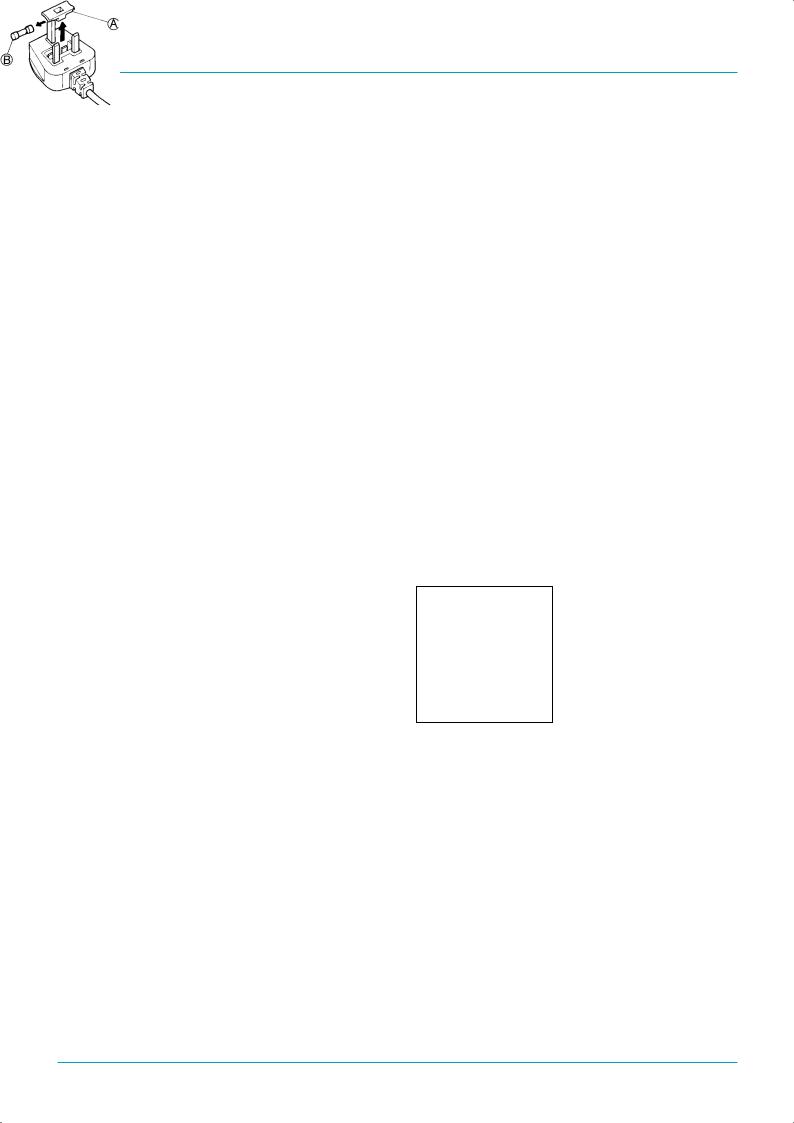Whirlpool ARG 910/G/WP, ART 480/R-LH, ART 480/R, CR 316 WE NF, ART 481/R User Manual

English
ENVIRONMENTAL HINTS
Packing Ù
Do not throw the packing into the garbage: first sort out the different materials (i.e.: steel, cardboard, polystyrene) following local regulations.
Conformity declaration
This appliance incorporates parts intended to come into contact with foodstuffs in compliance with EEC directive 89/ 09/CEE.
Information
This appliance is free of CFC’s (refrigerant circuit contains R 34a) or free of HFC’s (refrigerant circuit contains R600a - Isobutane). For more details, please refer to the rating plate on the appliance.
For appliances with Isobutane (R600a)
The refrigerant is a natural gas of high environmental compatibility but which is inflammable. Therefore, it is essential to ensure that the ducts of the refrigerant circuit do not get damaged.
KNOW YOUR FROST-FREE APPLIANCE
The main advantage of your refrigerator/freezer with fan circulation is the total absence of frost and ice forming on the compartments walls, thanks to the process described below. The cold air is produced by an evaporator and is circulated by means of a fan into the compartments.
The air, having been circulated, is again passed to the evaporator. This keeps the humidity low. In this way, there will be no frost formation on the compartment walls, as in a traditional appliance. The moisture in the air is retained by the evaporator, transformed into frost and then into water, this automatically flows into a tray where it evaporates. The “ventilated cold” system ensures a better storage of foods by maintaining their original condition for a longer period of time.
Besides these characteristics, which are typical of the FROST FREE system, the 0oC special compartment offers the additional advantage for the storage of delicate and perishable foods in the low temperature compartment.
DESCRIPTION OF THE APPLIANCE (Fig. )
! Light control button
" Refrigerator compartment control button a Refrigerator compartment
b Adjustable grid plates c Glass plate
d Crisper drawers
eLow temperature compartment to store meats, fish or particularly delicate or deteriorable foods
§Low temperature compartment control button (situated inside the compartment, on the rear wall)
f Inner door liner with adjustable compartments $ Fast freeze switch (yellow light)
% Mains switch (green light) - operation
&Freezer compartment control knob (adjustable by means of a coin)
g Freezer compartment
h Frozen foods storage baskets i Freezing-in basket
l Acoustic alarm of freezer door open (if provided) m Plinth.
INSTALLATION (Fig. 2)
Please check your appliance and ensure that it is undamaged: any transport damage must be reported to your dealer within 24 hours of receipt. The appliance should not be installed close to heat sources such as cookers, central heating boilers, direct sunlight, etc. It must however be located in a well ventilated
dry space, and in a housing following the separate instructions supplied. The housing has to be provided with a front and rear ventilation gap. The rear ventilation gap has to remain free: do not cover it with any object or sheet of paper (Fig. 3). The door support (if provided) (Fig. 4) is for transport purpose only. After installation of the appliance into the housing, fit the plinth (Fig. ) and clean the interior with a sponge dampened in a solution of lukewarm water and vinegar.
We suggest you reheat slightly the door gaskets (Fig. 5) to reestablish their original elasticity.
Attention
Please ensure that the supply socket is accessible after installation, in case the appliance requires a prompt disconnection. If not possible, connect the appliance to a doublepole switching device with contact separation of at least 3 mm placed in a accessible position even after installation.
ELECTRICAL CONNECTION AND OPERATION
This appliance has been designed, built and marketed in compliance with.
-the safety targets of the “Low Voltage” EEC Directive 73/23;
-the protection requirements of the “EMC” EEC Directive 89/336 amended by EEC Directive 93/68.
Please check that the voltage indicated on the rating plate situated inside the compartment (Fig. 8) corresponds to the voltage in your home (Fig. 9).
The earthing of this appliance is compulsory by law. The manufacturer will accept no liability for injury to persons or damage to objects arising from the nonob- servance of this requirement.
ELECTRICAL INFORMATION
For Great Britain only
“WARNING - THIS APPLIANCE MUST BE EARTHED” Fuse replacement.
If the mains lead of this appliance is fitted with a BS 1363A 13 amp fused plug, to change a fuse in this type of plug use an A.S.T.A. approved fuse to BS 1362 type and proceed as follows:
1.Remove the fuse cover (A) and fuse (B).
2.Fit replacement 13A fuse into fuse cover.
3.Refit both into plug.
IMPORTANT: The fuse cover must be refitted when changing a fuse and if the fuse cover is lost the plug must not be used until a correct replacement is fitted. Correct replacements are identified by the colour insert or the colour embossed in words on the base of the plug. Replacement fuse covers are available from your local electrical store.
CONNECTION TO A REWIREABLE PLUG
If the fitted plug is not suitable for your socket outlet, then it should be cut off and disposed of in order to avoid a possible shock hazard should it be inserted into a 13A socket elsewhere. A suitable alternative plug should then be fitted to the cable. The wires in this mains lead are coloured in accordance with the following code:
BLUE - “NEUTRAL” (“N”) BROWN - “LIVE” (“L”)
GREEN AND YELLOW - “EARTH” (“E”)
1.The GREEN AND YELLOW wire must be connected to the terminal in the plug which is marked with the letter “E” or by the Earth symbol 4 or coloured green or green and yellow.
2.The BLUE wire must be connected to the terminal which is marked with the letter “N” or coloured black.
5
